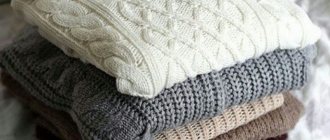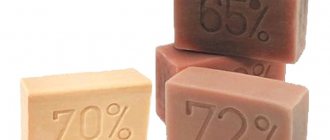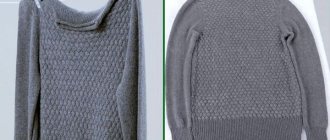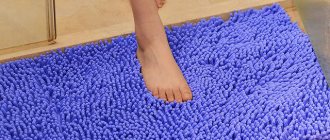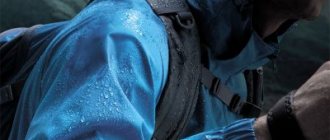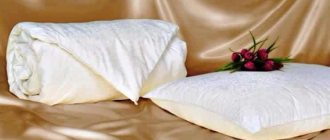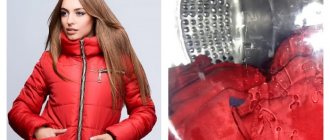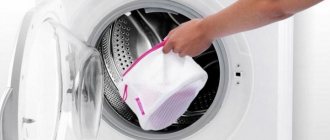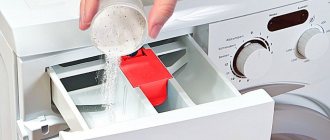“Belizna” is a powerful bleach based on sodium hypochlorite, widely known since Soviet times. It is able to return faded items to their original appearance, restore yellowed items and achieve a bright white hue.
The product is intended for bleaching cotton and linen fabrics, as well as very thin synthetic ones (if there are no prohibiting marks on the labels). But the procedure should be carried out strictly according to the instructions, otherwise the product may irreparably damage the material or lead to other negative consequences. It is not recommended to use the product to bleach items in a washing machine, as this can damage not only the clothes, but also the internal parts of the device.
To avoid rapid wear and tear on thin fabrics after using the product, it is necessary to carry out bleaching procedures using one of the following methods.
Composition and release form of "Belizna"
The main component of bleach is sodium hypochloride. The concentration of active chlorine declared by the manufacturer is maintained within the range of 70-85 g/dm³.
The preparation contains alkaline components and surfactants (surfactants).
Characteristics of “Whiteness”:
- liquid,
- pale yellow color,
- The smell of chlorine is pronounced.
Bleach is offered to consumers in 1-liter plastic bottles.
Description of the product
Fragrances may be added to the bleach to improve the smell. Despite the large selection of new whitening products, “Whiteness” is on every housewife’s shelf. With its help, many everyday problems are solved.
Properties
The scope of application of the product is wide.
List of main areas of use:
- whitening,
- stain removal,
- dishwashing,
- disinfection of premises,
- cleaning plumbing.
Price
“Whiteness” is included in the category of cheap products. The cost of a liter bottle depends on the place of production and can vary from 14 to 60 rubles.
How to bring white socks back to life?
You can mix ammonia with hydrogen peroxide in a 1:2 ratio to make an excellent homemade bleach. Apply the resulting mixture to white socks and leave for half an hour, then wash the items. You can remove old stains and refresh products using mustard powder.
Interesting materials:
What does high cholesterol affect? What does fish oil do? For what period are workwear issued? Which hand should the bracelet be worn on? Which hand should you wear your wedding ring on? Which hand is the wedding ring on in Russia? For what period does the customer formulate a procurement plan? For how long can a lease agreement be concluded? Which side is better to sleep on? Which side should you sleep on?
Benefits and uses
Bleach has a number of advantages that explain its popularity among housewives:
- cheapness,
- universal application,
- effective cleansing in cold water,
- simple instructions.
Washing and bleaching
Not every washing machine can use strong bleach. You must carefully read the instructions for the household appliance to make sure that the use of chlorine-containing products is not prohibited.
Reference! Before the first use, a small amount of the product is applied to the surface of the drum to check the material’s resistance to chlorine.
Any item made of synthetics, wool, or leather will become unusable upon contact with “Whiteness,” so before loading dirty laundry into the washing container, it is sorted.
Bleaching does not harm white linen and 100% cotton items, but only if it is done infrequently.
Before putting the laundry into the washing machine, soak it in cold water. Select the mode with the lowest temperature.
Be sure to read:
How to prepare dishwashing liquid at home: simple recipes
According to the instructions, the whiteness is diluted with water, the resulting solution is poured directly into the drum, and not into the detergent compartment.
This minimizes the exposure of appliance parts to harsh bleach. After finishing washing, run the rinse mode several times. It is necessary to completely remove traces of chlorine and its pungent odor.
To whiten a small number of items, hand wash is used:
- The laundry is placed in a basin, filled with water, and simple washing powder is added.
- 1 tbsp. l. “Whiteness” is diluted in 3 liters of lukewarm water, this solution is poured into a basin filled with dirty laundry.
- After 15 minutes, wring out the soaked items and rinse thoroughly.
- Dry clothes in the fresh air or with an open window.
Brief descriptions of the methods of using “Whiteness” are given in the table:
| Product type | Character of bleaching | Bleach consumption per 10 liters of water | Duration of the procedure |
| Blouses, linen, tablecloths, towels | Maintaining the whiteness of the product | 2.5 tbsp. l. | 20 minutes |
| Restoring the original white color of grayed, yellowed items | 2.5 tbsp. l. | 1 hour | |
| Denim, linen clothing, calico products | Removing stains | 0.5 tbsp. l. undiluted product is applied to the darkened area | 1 minute |
| Organza curtains, tulles that have lost their white color | Eliminating yellowness | 1 tbsp. l. | 5-10 minutes |
Disinfection
Using a chlorine-containing preparation, complex disinfection of premises is carried out.
In medical institutions, bleach is always used to treat any surfaces. “Whiteness” destroys harmful bacteria and fungi during processing.
Reference! Mold is destroyed with undiluted “White”. Apply the product to the surface affected by the fungus with a sponge.
Prepare a bleach water solution to wash the floor and tiles on the wall. Take 5 caps of product per 10-liter bucket. Apply disinfectant liquid to the surface to be treated, wait 15 minutes, and rinse with clean water.
Cleaning sewer drains
The method for cleaning sewer pipes clogged with dirt and grease is simple:
- At night, pour about 1 liter of bleach down the sink or toilet drain.
- The toilet lid is closed, the sink drain is plugged with a foam sponge.
- In the morning, flush the drains with plenty of water.
The unpleasant odor leaves the pipes, their clearance increases due to the fact that fatty deposits are broken down and washed away by the flow of water. Bleach helps clean plumbing fixtures from dirt, rust, and bacterial deposits.
Cleaning the aquarium
To clean the walls of plaque, the aquarium is freed from fish, snails, and plants. They are moved to a reserve tank. Pebbles, grottoes, and artificial plants are left behind.
Be sure to read:
Liquid for removing old wallpaper: do it yourself or choose from ready-made ones
Mode of application:
- Take 20 parts warm water, 1 part bleach, and fill the aquarium with the resulting solution.
- Drain the disinfectant solution after a few hours.
- All internal parts of the aquarium and decorative items are washed with clean water. After the smell goes away, prepare it for launch.
Cleaning the water filter
To maintain the current state of the reverse osmosis system, it is necessary to clean the filters. This procedure is carried out at the time of changing cartridges.
The work is carried out in the following sequence:
- Remove the cartridges.
- Containers No. 2 and No. 3 are closed.
- First, 10 ml of bleach is poured into flask No. 1, then water is poured, then it is twisted.
- Water is supplied to the filter after 20 minutes, it is turned off when the tap smells of bleach.
- All taps are turned off and the system is disinfected for several hours.
- Before refilling the cartridge, a large volume of water is passed through the filter.
Cleaning animal cages
It is difficult to clean heavily soiled enclosures, cages for hamsters, mice, pet rats, and birds with a simple detergent. To keep the trays and homes of animals clean, use “Whiteness”.
Prepare a solution of a certain concentration:
- water – 1 l,
- concentrated product – 100 ml.
Animals are removed during processing . The solution is applied to all parts of the cages and trays and washed off with a large volume of water. Pets are returned to their home when the treated surfaces are dry.
Reference! When industrially breeding rabbits, the cages are treated with con twice a year.
If there are animals at home?
The apartment (floor, trays, walls) in which pets live must be washed at least once a week with a weak disinfectant solution.
When preparing it, certain proportions are followed:
- water volume – 1 l,
- volume of “Whiteness” – 50 ml.
“Whiteness” does not wash the entire area of walls and floors. They treat the places where animals shit and mark the territory.
Whitening jeans
Many people are interested in how to bleach jeans at home to refresh them and make them more fashionable and stylish. Bleach will help lighten or decorate the fabric, creating uneven stains on it.
To bleach jeans with “Whiteness,” add a few tablespoons of the product to a large amount of water (so that the item can be completely immersed and stirred with a wooden stick to ensure uniform exposure to the active substance). The concentration is selected depending on the desired effect, but it should be remembered that the more concentrated the solution, the more damage to the material.
If you plan to make stains on the fabric, knots are tied on the jeans using thick white threads or tucks are made, and the twists are fixed using improvised methods. The solution is prepared in a metal container so that it can be heated on the stove.
After dipping the jeans into the solution and waiting until it boils, stir and watch for the color change. Once the required shade is reached, the item is removed and rinsed well in running water. Boiling in bleach lasts up to 15 minutes.
Another option for decorating denim clothes: in “Whiteness,” a gauze swab is moistened and the fabric is processed through a stencil to obtain the desired pattern. When processing jeans, place a piece of polyethylene inside so that the bleach does not seep through and leave unnecessary whitish spots on the back of the leg.
Is it possible to wash dishes with Beliznoy?
Washing dishes with bleach kills harmful bacteria.
Therefore, it is recommended to treat an apartment with “Belizna” in situations where there is an infectious patient in the family.
In other cases, ordinary products are sufficient to keep dishes clean.
Important! Dishes made of silver, steel, and aluminum cannot be treated with chlorine-containing preparations.
Stages of processing dishes:
- Pour 20 parts of hot water into a basin, 1 part of “Whiteness”.
- Place the dishes in the solution for 60 minutes.
- Wear gloves and wipe the surface of the dishes with a sponge.
- Rinse well, do not wipe.
Be sure to read:
The most convenient mop for washing floors: 8 types and how to use the spin cycle
What can be replaced
You can replace Whiteness with a product containing the same active ingredient, sodium hypochlorite. These include:
- Amukin;
- Belen;
- Hypostabil;
- Domestos and Domestos Universal;
- Clorox;
- Chistin;
- Sanfor;
- Comet WC and Comet gel;
- Neoseptal chlorine;
- Rimazon-chlor;
- Chlorosept B.
The listed drugs have similar disinfectant and antiseptic effects, but have additional components in their composition.
Whiteness is the most common and inexpensive disinfectant. Its range of applications includes the food industry, medicine and household needs. The substances included in the composition give the product an antibacterial and antifungal effect. However, the aggressive composition imposes restrictions on use. Compliance with safety precautions and the manufacturer's instructions will allow you to keep your home clean and keep things looking snow-white without much expense.
What to do if “Whiteness” gets on your clothes?
A concentrated solution of “Whiteness” changes the color of the fabric. If immediate action is not taken within 3 days, the bleach stain will remain forever.
The use of special dyes allows you to restore the uniform color of the product. Painting is carried out in accordance with the instructions that come with the paint.
Remove Whiteness stains with sodium thiosulfate. Prepare the composition by dissolving 1 tsp. products in 1 glass of water. The recipe gives good results if the stain is fresh.
Chlorine leaves yellow stains on fabric. They are removed with aspirin, hydrogen peroxide, and ammonia.
How to remove “Whiteness” from clothes:
| Means | Preparation | Application |
| Hydrogen peroxide | Moisten a cotton pad | Rub the stain, wash the item, rinse it |
| Aspirin | Dissolve 2 tablets in a small amount of warm water | Moisten the stain with the resulting solution and wash the item after 2 hours. |
| Ammonia | Add 1 tsp to 1 glass of water. products and table salt | Soak the damaged item and wash it after 60 minutes |
Basic Rules
Most often, white clothes deteriorate during washing due to ignorance of the basic rules for caring for them:
- Do not wash white and colored items together, as the colored material may fade and stain the white.
- Before washing, you should carefully read the factory recommendations on the clothing tag. Each type of fabric should be washed at the appropriate temperature. Before loading into the machine, be sure to sort things.
- Linen and cotton cannot withstand temperatures above 60 degrees. In addition, they should be washed separately from wool and synthetic fabrics.
- Delicate fabrics such as viscose, linen or wool should be washed at 40 degrees on a delicate cycle.
- If you find a stain, you should wash it immediately while it is still wet.
- You should not bleach things frequently, as this has a detrimental effect on the condition of the fabric.
Important! Fabrics such as linen, cotton and occasionally synthetics are suitable for bleaching with Whiteness. However, before bleaching, it is important to read the recommendations on the product tag.
Precautionary measures
During operation, the product may splash onto the surface of the skin. To prevent burns, the affected part of the body should be rinsed with tap water. You should not inhale the vapors of “Belizna”; they can burn the esophagus.
Important! Items made from natural fabrics (leather, silk, wool) cannot be bleached; they will quickly become unusable.
Household gloves prevent the drug from getting on the skin of your hands. During treatment, children must be removed from the room: bleach vapors can harm their health.
